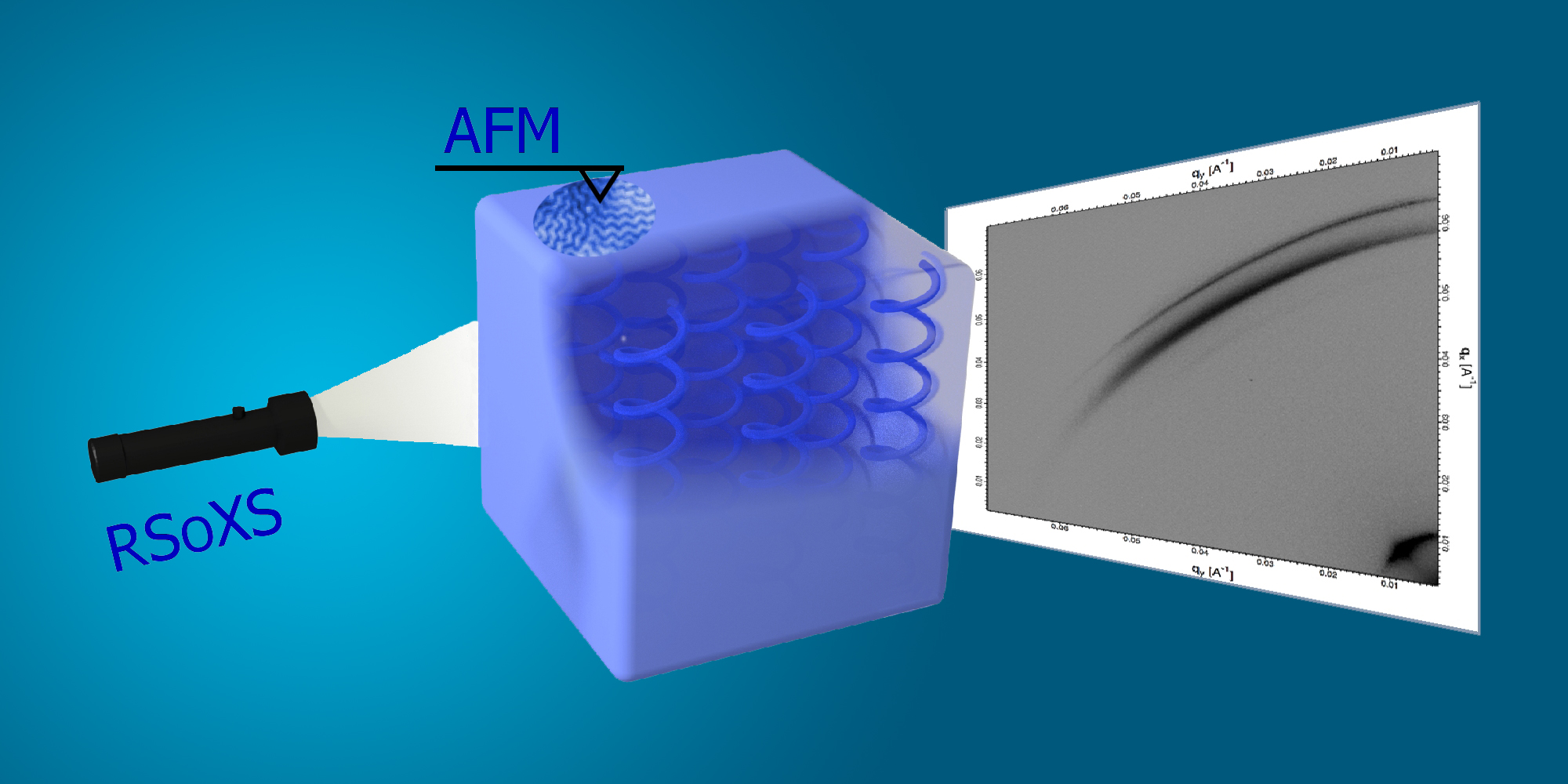Researchers used the Advanced Light Source (ALS) to study liquid crystals that surprisingly exhibited up to four levels of structural chirality, despite being made up of achiral molecules. There are many objects in nature that exhibit chirality: they have a “handedness” (like left and right hands) that distinguishes them structurally from their mirror images. In most cases, chirality at the macroscopic level is an expression of chirality at the molecular level. In recent years, however, scientists have found chiral structures—helices—in nematic (ordered-fluid) liquid crystals composed of achiral molecules.
In the work described here, researchers were interested in whether similar helical structures could also be found in systems with a higher degree of organization—in smectic (layered) liquid-crystal phases. At ALS Beamline 11.0.1.2, resonant soft x-ray scattering (RSoXS) is capable of revealing periodic structures related to orientational order (e.g., helical structures). The researchers applied this technique to two smectic liquid crystals composed of achiral dimers: two rod-like cores connected by a flexible spacer. The data revealed up to four levels of structural chirality, from the nano- to micro-scale: helicity of a basic repeating unit, layer chirality, mesoscopic helices, and helical filaments. The findings were supported by theoretical modeling as well as optical and atomic force microscopy observations.
In general, the work sheds light on how molecular properties and competing interactions “propagate” order from the molecular level up to the microscale, leading to chiral materials and objects with complexity similar to that found in biological materials such as proteins and DNA.

M. Salamończyk, N. Vaupotič, D. Pociecha, R. Walker, J.M.D. Storey, C.T. Imrie, C. Wang, C. Zhu, and E. Gorecka, “Multi-level chirality in liquid crystals formed by achiral molecules,” Nat. Commun. 10, 1922 (2019), doi:10.1038/s41467-019-09862-y.